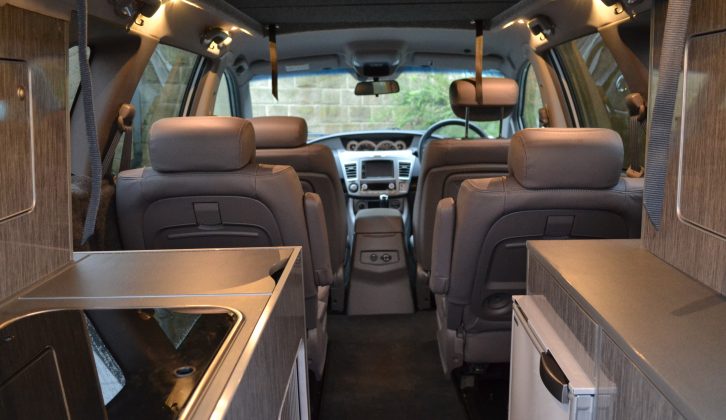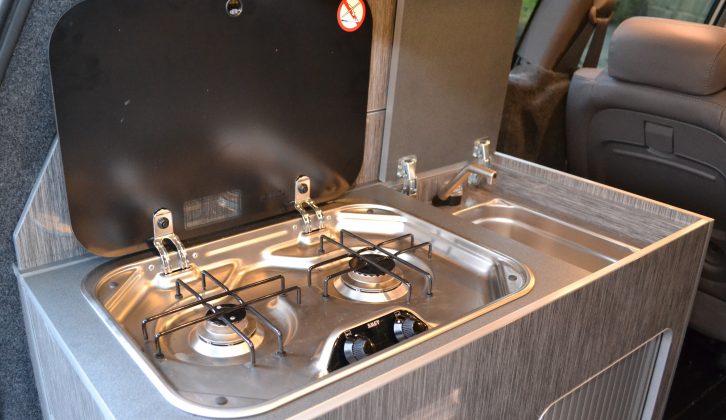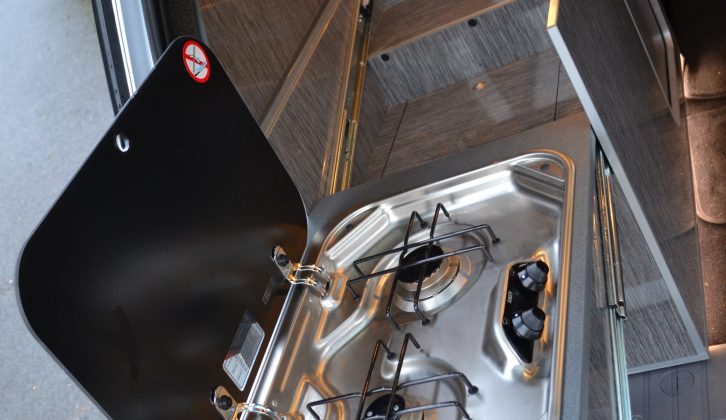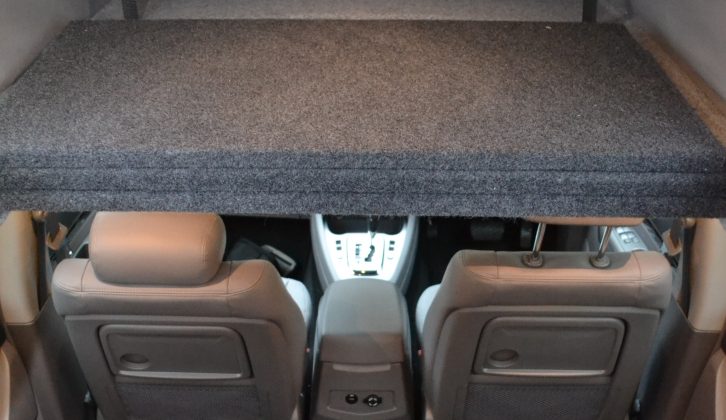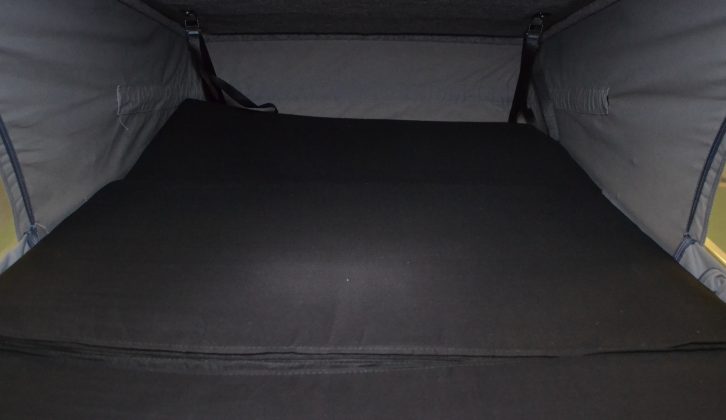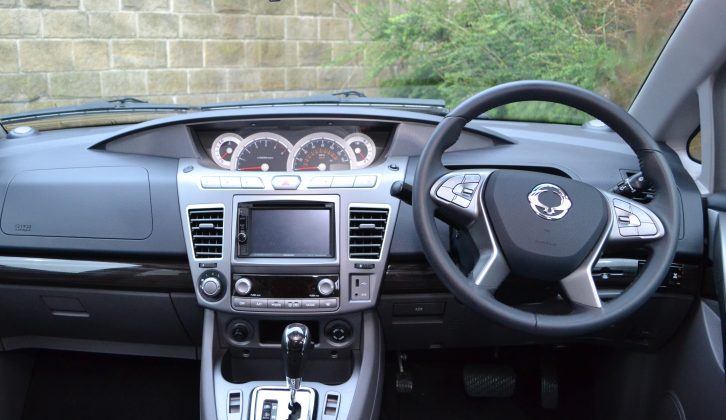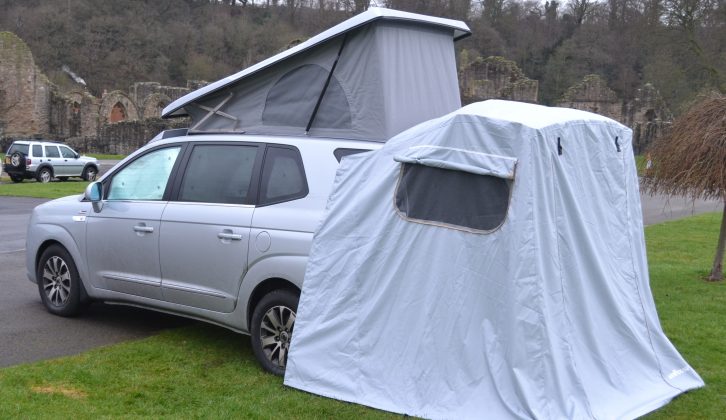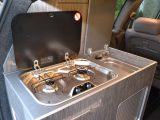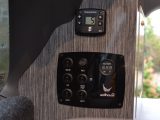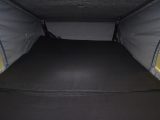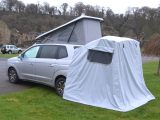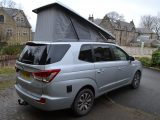Verdict
If you just need a large sleeping vehicle for a hobby that involves overnight stays, the SsangYong Turismo Tourist is ideal.
Indeed, in this camper car market, it offers a much smoother ride than many other van conversions, so could be a strong choice.
For anything more extensive, however, you might soon grow weary of it.
Pros
The 7ft-long beds are a luxury in a camper car
It is comfortable and car-like to drive – and super-manoeuvrable
The kitchen is cleverly designed to make the most of the available space
Cons
There’s no proper dining area
Space – especially for stowing items – is at a premium
Wellhouse Leisure should be familiar to anyone with an interest in van conversions.
The name of the base vehicle manufacturer the Huddersfield company teamed up with to launch new pop-top conversions at last October’s NEC show, however, is a little more exotic.
SsangYong is best-known in this country for producing SUVs. The SsangYong Turismo Tourist, the people carrier conversion Wellhouse Leisure has created, is its first venture into camper vans.
But it is clearly serious about the venture: the vehicle is, at least initially, only being sold through SsangYong dealers.
And according to Wellhouse founder David Elliott, the South Korean company has been the most enthusiastic of any of the Far Eastern manufacturers he has so far dealt with.
So how does it stack up? One wintry night earlier this year we took a new model out to try – so new, in fact, that since we returned it the ’van has already had a couple of modifications, that we will come to later.
It’s definitely a luxury to be able to stretch your toes out at the bottom of the bed, wiggle them, and still feel space around them
Living
Inside the SsangYong Turismo Tourist there is not quite so much success, if you’re after a ‘proper’ camper van, although there’s plenty of innovation.
Sitting in the lounge, even with the pop-up roof raised, it is hard to get away from the impression that you are still sitting in a car. It is perhaps not surprising that the first adjustment Wellhouse has made since we saw this ’van is to change to swivelling front seats.
The only tables available are the aeroplane-style tables that drop down from behind the seats (which would therefore disappear once the cab seats are swivelled).
The lounge is well lit with six spotlights – although bear in mind that an electric hook-up point and solar panel are both optional extras on this ’van, costing £250 and £700 respectively.
A heating vent immediately underneath the heating controls by the rear offside door gets things toasty quickly. Your privacy is also assured, because stick-on blinds come for every window.
But if it was even a remotely pleasant evening and you were staying for more than half a minute I would set the awning up. And as most of it fits over the tailgate, this is not a time-consuming job.
With the awning in place you have a well-lit and ventilated space within which you could easily set up a folding table and two chairs, creating a proper dining space. You could then keep the back of the vehicle for sleeping and storage only.
Kitchen
The kitchen is one area where the SsangYong Turismo Tourist is proof of Wellhouse’s clever thinking.
Kit-wise you get what you’d expect in a camper van which is impressive, with a two-burner hob, a sink with a fold-down tap and a fridge. But what you might not expect is that you also get a choice of cooking positions.
It is perfectly possibly to operate the two-burner hob from inside the back of the vehicle. But if you push the side of the hob, it slides down and out into a cantilevered position out the back of the ’van, where you can stand to use it.
Doing this also opens up more workspace on the nearside kitchen unit, as well as access to the gas bottle underneath.
At the other end of this unit is a small rectangular sink, with waste and fresh water containers taking up most of the cupboard directly underneath it.
Across on the other side of the ’van, another small unit with more workspace houses a 25-litre compressor fridge and the Porta Potti.
Beds
The seats require just a bit of adjusting and aligning to be turned into those 7ft-long beds. You needn’t worry about them being lumpy, as you get three infills and a mattress topper to make sure the surface is flat.
And it’s definitely a luxury to be able to stretch your toes out at the bottom of the bed, wiggle them, and still feel space around them.
That said, with so much infill and with the seat belt fittings so prominent, these are not exactly normal beds. They are more like the beds you get in business class on intercontinental flights: alright for one or possibly two nights, but a bit wearing after that.
On our test night we were kept beautifully warm. The tailgate was left open for the awning, but the Eberspächer heater (a £1000 option) coped admirably.
We did not have the pop-up roof up, however. Extending – and refastening – it is a relatively easy job of releasing four rucksack-style catches.
But our test model only had three felted wood panels as a floor up here, and we wouldn’t recommend even children sleeping on them – not least because one of them had a habit of falling down. However, we understand that these have now been replaced with slats and an average-sized mattress, so this area should work better.
Storage
In terms of storage space, with two cupboards either side of the kitchen, both shelved, you should have enough space for your food if you’re only away for a few nights.
Clothes storage is more limited: there is no wardrobe, and although there is plenty of space between the seats and in the aisle to stash an overnight bag, they’ll be fighting for space with the bags for the awning, mattresses and blinds, that also have to find a place in this area when you’re on the road.
But, as we’ve said, this kind of camper car is likely to be used only for short breaks, so with a bit of planning, what space is on offer should prove sufficient.
Technical Specifications
| Payload | 400 kg |
| MTPLM | 2850 kg |
| Shipping Length | 5.13 m |
| Width | 1.91 m |


